 W
WFrance is divided into eighteen administrative regions, of which thirteen are located in metropolitan France, while the other five are overseas regions.
 W
WMetropolitan France, also known as European France, is the area of the French Republic which is geographically in Europe. This collective name for the European regions of France is used in everyday life in France but has no administrative meaning. Indeed, the overseas regions have exactly the same administrative status as the metropolitan regions. Metropolitan France comprises mainland France and Corsica, as well as nearby islands situated in the Atlantic Ocean, the English Channel and the Mediterranean Sea.
 W
WThis article lists French regions and overseas collectivities by gross domestic product (GDP).
 W
WThe following are ranked lists of French regions.
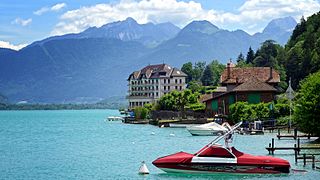 W
WAuvergne-Rhône-Alpes is a region in southeast-central France created by the 2014 territorial reform of French regions; it resulted from the merger of Auvergne and Rhône-Alpes. The new region came into effect on 1 January 2016, after the regional elections in December 2015.
 W
WBourgogne-Franche-Comté is a region in Eastern France created by the 2014 territorial reform of French regions, from a merger of Burgundy and Franche-Comté. The new region came into existence on 1 January 2016, after the regional elections of December 2015, electing 100 members to the regional council of Bourgogne-Franche-Comté.
 W
WBrittany is the farthest west of the regions of Metropolitan France. It is covers about four-fifths of the territory of the historic province of Brittany. Its capital is Rennes.
 W
WCentre-Val de Loire or Centre Region, as it was known until 2015, is one of the eighteen administrative regions of France. It straddles the middle Loire Valley in the interior of the country, with a population of 2,572,853 as of 2018. Its prefecture is Orléans.
 W
WCorsica is an island in the Mediterranean Sea and politically one of the eighteen regions of France. It is the fourth-largest island in the Mediterranean and lies southeast of the French mainland, west of the Italian Peninsula and immediately north of the Italian island of Sardinia, the land mass nearest to it. A single chain of mountains makes up two-thirds of the island. In 2018, it had a population of 338,550.
 W
WFrench Guiana is an overseas department/region and single territorial collectivity of France on the northern Atlantic coast of South America in the Guianas. It borders Brazil to the east and south and Suriname to the west.
 W
WGrand Est is an administrative region in Northeastern France. It superseded three former administrative regions, Alsace, Champagne-Ardenne and Lorraine, on 1 January 2016 under the provisional name of Alsace-Champagne-Ardenne-Lorraine, as a result of territorial reform which had been passed by the French Parliament in 2014.
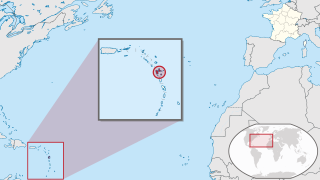 W
WGuadeloupe is an archipelago and overseas department and region of France in the Caribbean. It consists of six inhabited islands—Basse-Terre, Grande-Terre, Marie-Galante, La Désirade, and the two inhabited Îles des Saintes—as well as many uninhabited islands and outcroppings. It is south of Antigua and Barbuda and Montserrat, and north of Dominica. The region's capital city is Basse-Terre, located on the southern west coast of Basse-Terre Island; however, the most populous city is Les Abymes and the main center of business is neighbouring Pointe-à-Pitre, both located on Grande-Terre Island.
 W
WHauts-de-France is the northernmost region of France, created by the territorial reform of French regions in 2014, from a merger of Nord-Pas-de-Calais and Picardy. Its prefecture is Lille. The new region came into existence on 1 January 2016, after regional elections in December 2015. The Conseil d'État approved Hauts-de-France as the name of the region on 28 September 2016, effective the following 30 September.
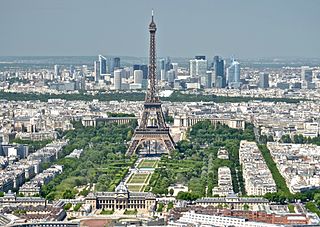 W
WThe Île-de-France is the most populous of the eighteen regions of France. Centred on the capital Paris, it is located in the north-central part of the country and often called the Région Parisienne. Île-de-France is densely populated and retains a prime economic position on the national stage: though it covers only 12,012 square kilometres, about 2% of metropolitan French territory, its estimated 2020 population of 12,278,210 was nearly one-fifth of the national total; its economy accounts for nearly one-third of the French gross domestic product.
 W
WMartinique is an island and an overseas department/region and single territorial collectivity of France. An integral part of the French Republic, Martinique is located in the Lesser Antilles of the West Indies in the eastern Caribbean Sea. It has a land area of 1,128 km2 (436 sq mi) and a population of 376,480 inhabitants as of January 2016. One of the Windward Islands, it is directly north of Saint Lucia, northwest of Barbados and south of Dominica. Martinique is also an Outermost Region (OMR) of the European Union and a special territory of the European Union; the currency in use is the euro. Virtually the entire population speaks both French and Martinican Creole.
 W
WNormandy is a geographical and cultural region in north-western Europe, roughly coextensive with the historical Duchy of Normandy.
 W
WNormandy is the northwesternmost of the eighteen regions of France, roughly coextensive with the historical Duchy of Normandy.
 W
WNouvelle-Aquitaine is the largest administrative region in France, spanning the west and southwest of the mainland. The region was created by the territorial reform of French regions in 2014 through the merger of three regions: Aquitaine, Limousin and Poitou-Charentes. It covers 84,036 km2 (32,446 sq mi) – or 1⁄8 of the country – and has 5,956,978 inhabitants. The new region was established on 1 January 2016, following the regional elections in December 2015.
 W
WOccitanie, Occitany or Occitania is the southernmost administrative region of metropolitan France excluding Corsica, created on 1 January 2016 from the former regions of Languedoc-Roussillon and Midi-Pyrénées. The Conseil d'État approved Occitanie as the new name of the region on 28 September 2016, coming into effect on 30 September 2016.
 W
WPays de la Loire is one of the 18 regions of France, in the west of the mainland. It was created in the 1950s to serve as a zone of influence for its capital, Nantes, one of a handful of "balancing metropolises" ¹.
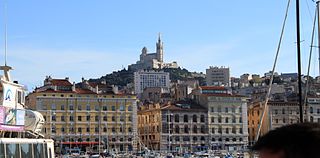 W
WProvence-Alpes-Côte d'Azur is one of the eighteen administrative regions of France, the far southeastern on the mainland. Its prefecture and largest city is Marseille. The region is roughly coterminous with the former French province of Provence, with the addition of the following adjacent areas: the former papal territory of Avignon, known as Comtat Venaissin; the former Sardinian-Piedmontese County of Nice, whose coastline is known in English as the French Riviera and in French as the Côte d'Azur; and the southeastern part of the former French province of Dauphiné, in the French Alps. Previously known by the acronym PACA, the region adopted the name Région Sud as a commercial name or nickname in December 2017. 5,007,977 people live in the region according to the 2015 census.
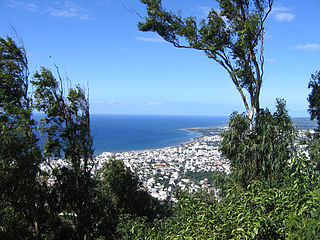 W
WRéunion is an island in the Indian Ocean that is an overseas department and region of France. It is located approximately 550 km (340 mi) east of the island of Madagascar and 175 km (109 mi) southwest of the island of Mauritius. As of January 2021, it had a population of 858,450.